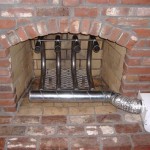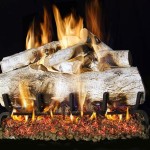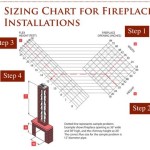Gas Fireplace Direct Vent Through Wall: A Comprehensive Guide
Gas fireplaces offer a convenient and efficient heating solution for many homes. Among the various venting options available, direct vent systems are particularly popular due to their safety and versatility. Direct vent fireplaces draw combustion air from outside the house and exhaust combustion byproducts directly to the outside, making them a sealed system that minimizes the risk of indoor air quality issues. One specific installation method involves venting directly through an exterior wall, a process this article will explore in detail.
Understanding the principles and requirements of direct vent through-wall installations is crucial for homeowners considering this option, as well as for installers ensuring safe and compliant setups. This comprehensive guide will delve into the mechanics of direct vent systems, the benefits of through-wall venting, the considerations involved in planning and executing an installation, and the regulations that govern such projects.
Understanding the Direct Vent System
A direct vent system is a closed combustion system. It utilizes a dual-pipe configuration, either in a concentric (pipe within a pipe) or co-linear (side-by-side) arrangement. One pipe draws combustion air from outside the building, and the other expels exhaust gases. This sealed system prevents indoor air from being used for combustion, safeguarding against the depletion of oxygen within the living space and preventing the backdrafting of potentially harmful combustion byproducts.
The direct vent design contributes to improved energy efficiency. By using outside air for combustion, the firebox is isolated from the home's conditioned air, reducing heat loss and preventing drafts. Furthermore, the sealed system minimizes the potential for pollutants such as carbon monoxide to enter the living space, enhancing safety. Direct vent systems are versatile and can be installed in various locations, including interior walls, exterior walls, and even along the floor line, depending on the appliance and venting design.
The components of a direct vent system are designed to work together seamlessly. The fireplace appliance itself is engineered to accommodate the direct vent configuration. The venting pipes are specifically designed for direct vent applications, often featuring interlocking connections and durable materials capable of withstanding high temperatures and corrosive gases. Terminations are critical components of the system, safely expelling exhaust and drawing in fresh air while preventing the entry of debris, snow, or rain. The proper selection, installation, and maintenance of each component are essential for the safe and efficient operation of the direct vent system.
Advantages of Through-Wall Venting
Venting a gas fireplace directly through an exterior wall offers several advantages, making it a desirable option for many installations. One primary benefit is the simplified installation process, especially in situations where vertical venting is impractical or aesthetically undesirable. Through-wall venting often requires less extensive construction compared to routing venting through a roof or chimney.
Cost-effectiveness plays a significant role in choosing through-wall venting. Eliminating the need for extensive ductwork to reach the roof can reduce material costs and labor expenses. This option is often more economical, particularly in ranch-style houses or dwellings where the fireplace is located on an exterior wall.
Aesthetic considerations also contribute to the appeal of through-wall venting. In some cases, a visible chimney on the roof may detract from the architectural style of the home. Through-wall venting allows for a more discreet appearance, with the termination cap often being the only visible element on the exterior of the building. This can be especially important in areas with strict building codes or homeowner association regulations.
Installation flexibility is another key advantage. Through-wall venting can be a good solution for retrofitting a gas fireplace into an existing space where a traditional chimney is not available. This provides homeowners with the freedom to add a fireplace to a room without undergoing major structural changes.
Planning and Installation Considerations
Proper planning is paramount when installing a direct vent gas fireplace with through-wall venting. The first step involves carefully selecting the fireplace appliance, factoring in the size of the room to be heated and the desired aesthetic. The chosen appliance must be specifically designed for direct vent applications and comply with all relevant safety standards.
Venting requirements are critical and must be meticulously followed. The manufacturer's installation instructions provide detailed specifications for the type and length of venting pipe allowed, as well as the location and clearances for the termination cap. Deviations from these instructions can compromise the safety and performance of the fireplace. Horizontal vent runs often have limitations in length, as well as maximum numbers of elbows, so those factors need to be considered.
Wall preparation is essential to ensure a secure and airtight installation. The wall opening must be accurately sized to accommodate the venting pipe and any necessary firestops or insulation. Proper sealing around the venting pipe is crucial to prevent air leaks and maintain the integrity of the thermal envelope of the building. Wall sheathing and framing members must be protected from heat with non-combustible materials.
Clearance to combustibles is a key safety concern. The venting pipe must maintain a safe distance from any combustible materials, such as wood framing, insulation, and wall coverings. Firestops are commonly used to create a barrier between the venting pipe and combustible materials, preventing the spread of fire in the event of a malfunction. The termination cap must also be positioned in a safe location, away from windows, doors, and other openings that could allow exhaust gases to re-enter the building.
Proper sealing is vital to prevent drafts and maintain indoor air quality. All joints in the venting system must be securely sealed with appropriate sealant, as specified by the manufacturer. The area around the wall penetration should also be sealed to prevent air infiltration. A properly sealed system ensures that combustion byproducts are safely vented to the outside and that the fireplace operates efficiently.
Local codes and permitting requirements must be adhered to. Most jurisdictions require permits for gas fireplace installations, and inspections are typically conducted to ensure compliance with building codes and safety regulations. It is the responsibility of the homeowner or installer to obtain the necessary permits and schedule inspections before operating the fireplace. Failure to comply with local codes can result in fines, penalties, and even the shutdown of the appliance.
Safety Regulations and Standards
Direct vent gas fireplaces are subject to strict safety regulations and standards designed to protect homeowners and prevent accidents. These regulations are typically based on national codes and standards, such as those published by the American National Standards Institute (ANSI) and the Canadian Standards Association (CSA). Local building codes may also impose additional requirements specific to the jurisdiction.
Compliance with these standards is mandatory for all gas fireplace installations. These standards cover a wide range of aspects, including the design and construction of the fireplace appliance, the materials used for venting, the installation procedures, and the safety features incorporated into the system. Manufacturers must have their products tested and certified by independent testing laboratories to ensure compliance with these standards.
Proper termination placement is critical for preventing the re-entry of exhaust gases into the building. Codes specify minimum clearances for the termination cap from windows, doors, air intakes, and other openings. These clearances are designed to ensure that exhaust gases are dispersed safely away from areas where they could pose a health hazard.
Regular inspections and maintenance are essential for ensuring the continued safe operation of a direct vent gas fireplace. The venting system should be inspected annually by a qualified technician to identify any signs of damage, corrosion, or blockage. The fireplace should also be cleaned regularly to remove any accumulated dust, dirt, or debris. Following the manufacturer's recommended maintenance schedule can help prevent problems and extend the life of the appliance.
Carbon monoxide detectors should be installed in the home to provide an early warning in the event of a carbon monoxide leak. These detectors should be located near sleeping areas and on every level of the home. Batteries should be tested regularly, and detectors should be replaced according to the manufacturer's recommendations.
Professional installation is highly recommended for direct vent gas fireplaces. A qualified installer has the knowledge, experience, and tools necessary to ensure that the fireplace is installed safely and correctly. They can also advise homeowners on the proper operation and maintenance of the appliance.

What Are The Best Ways To Vent A Gas Fireplace Zoroast
Gas Fireplace Venting Explained Heat Glo
Gas Fireplace Venting Explained Heat Glo

What Are The Best Ways To Vent A Gas Fireplace Zoroast

Icc Direct Vent Gas Venting Insulated Wall Thimble

Twenty6 SÓlas Contemporary Fireplaces

How To Find The Most Efficient Direct Vent Gas Fireplace For Your Next Project

Fireplace Cover To Keep Cold Air Out

Gas Fireplaces Direct Vent Vs Free Fine Homebuilding

Fire Ribbon Direct Vent Slim Gas Fireplace Spark Modern Fires








